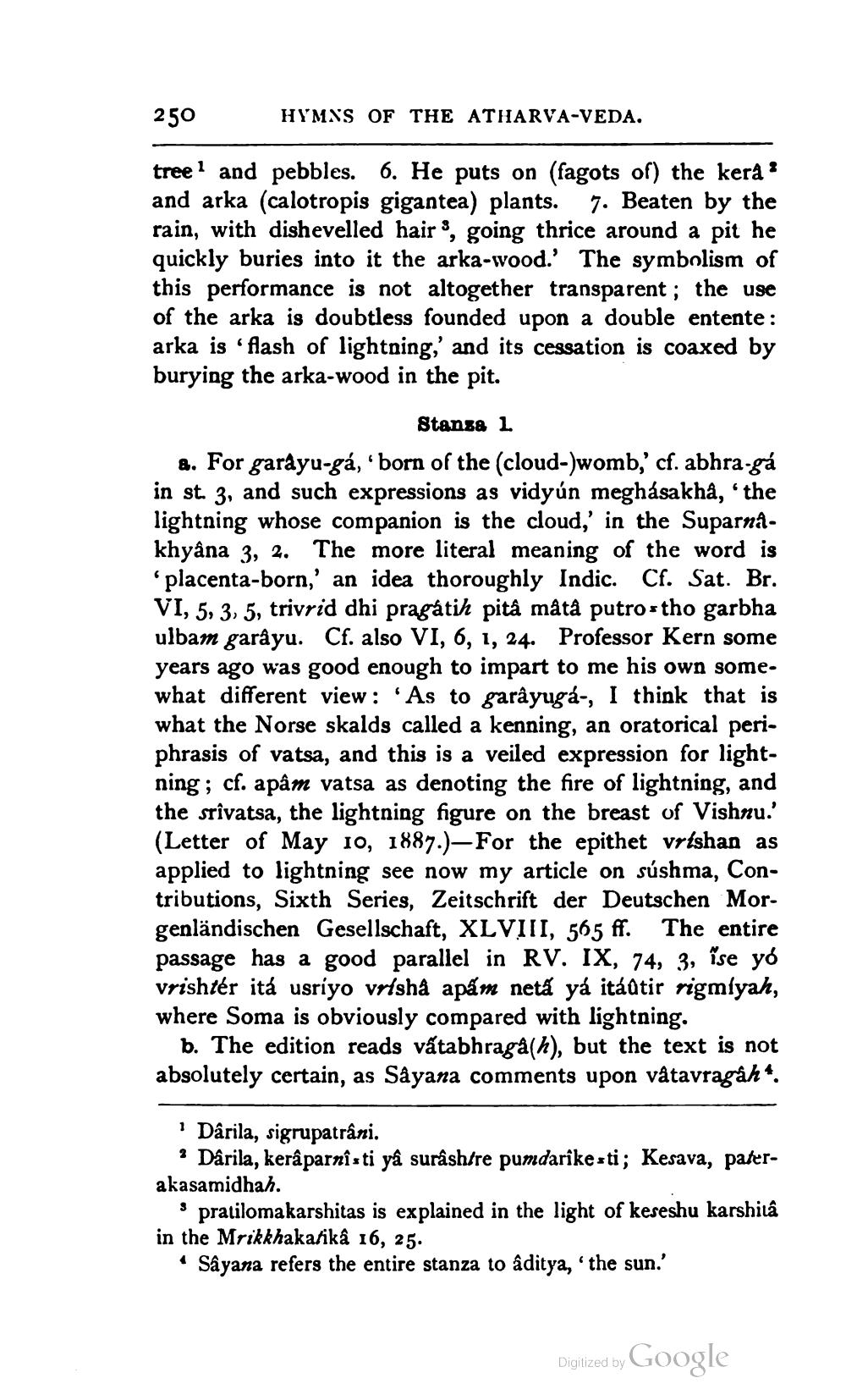________________
250
HYMNS OF THE ATHARVA-VEDA.
treel and pebbles. 6. He puts on (fagots of) the kera? and arka (calotropis gigantea) plants. 7. Beaten by the rain, with dishevelled hair , going thrice around a pit he quickly buries into it the arka-wood.' The symbolism of this performance is not altogether transparent; the use of the arka is doubtless founded upon a double entente: arka is 'flash of lightning,' and its cessation is coaxed by burying the arka-wood in the pit.
Stansa 1 2. For garayu-gá, ' born of the (cloud-)womb;' cf. abhra.ga in st. 3, and such expressions as vidyún meghásakhå, 'the lightning whose companion is the cloud,' in the Suparnakhyâna 3, 2. The more literal meaning of the word is
placenta-born,' an idea thoroughly Indic. Cf. Sat. Br. VI, 5, 3, 5, trivrid dhi pragatih pitâ mâtà putros tho garbha ulbam garayu. Cf. also VI, 6, 1, 24. Professor Kern some years ago was good enough to impart to me his own somewhat different view: 'As to garậyugá-, I think that is what the Norse skalds called a kenning, an oratorical periphrasis of vatsa, and this is a veiled expression for lightning ; cf. apâm vatsa as denoting the fire of lightning, and the stîvatsa, the lightning figure on the breast of Vishnu.' (Letter of May 10, 1887.)— For the epithet vrlshan as applied to lightning see now my article on súshma, Contributions, Sixth Series, Zeitschrift der Deutschen Morgenländischen Gesellschaft, XLVIII, 565 ff. The entire passage has a good parallel in RV. IX, 74, 3, ise yó vrishtér itá usriyo vrlshå apám netá ya itáūtir rigmiyah, where Soma is obviously compared with lightning.
b. The edition reads vấtabhraga (k), but the text is not absolutely certain, as Sayana comments upon våtavragâh*.
Dârila, sigrupatrâni. * Dârila, kerâparnîsti yâ surâshtre pumdarîke sti; Kesava, paterakasamidhah.
s pralilomakarshitas is explained in the light of keseshu karshila in the Mrikkhakatikâ 16, 25.
• Sâyana refers the entire stanza to aditya, 'the sun.'
Digitized by Google




